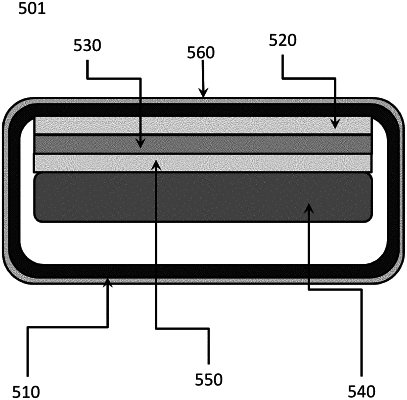| CPC B32B 17/10064 (2013.01) [B32B 1/08 (2013.01); B32B 3/263 (2013.01); B32B 7/023 (2019.01); B32B 17/06 (2013.01); B32B 17/10 (2013.01); B32B 17/10091 (2013.01); B32B 17/10137 (2013.01); H05K 5/0017 (2013.01); H05K 5/03 (2013.01); B32B 2307/418 (2013.01); B32B 2457/202 (2013.01); G06F 1/1626 (2013.01); G06F 2200/1634 (2013.01); H04M 1/0202 (2013.01)] | 12 Claims |

|
1. A cover article comprising:
a glass sleeve structure having an internal cavity with an unpolished internal surface, a polished outer surface, and a non-circular cross section;
a first index-matching material disposed on at least a portion of the internal surface of the glass sleeve structure; and
a second glass structure comprising glass and disposed on at least a portion of the first-index matching material such that the first index-matching material is present between and in direct contact with the glass sleeve structure and the glass of the second glass structure,
wherein the glass sleeve structure has a first index of refraction, the second glass structure has a second index of refraction that is within ±25% of the first index of refraction, and the first index-matching material has a third index of refraction that is within ±10% of the first or the second index of refraction.
|